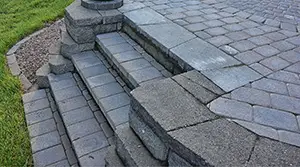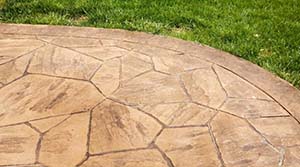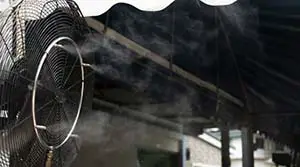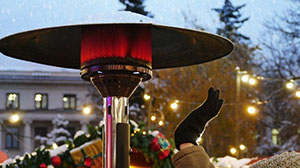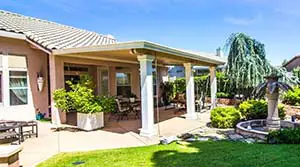
Cold nights and rainy days can sure put a damper on your outdoor patio party. A roof and outdoor heater can essentially solve this issue, but is it safe to use them together?
It is safe to use an outdoor heater under a covered patio if you follow all the precautions. Different heaters require different clearance distances from various roof materials, but you can use most in this way.
Follow the manufacturer’s guidelines and the recommendations in this article to ensure you will create a space that is both comfortable and safe.
The best place to get the answers for your heater is by checking the manual. But that manual may not give all the information for your particular needs. Here, we will detail what you should watch out for and use them safely.
What Are the Most Common Types of Patio Heaters?
There are many outdoor heater designs, and each has its unique considerations when using it under a covered patio. Before discussing minimum clearances and setting up your heater, we need to understand the different fuel types.

1. Propane Heaters
Propane heaters are some of the most common ones for outdoor spaces. They are easy to install as it usually only means hooking up the tank and hand tightening the hose fitting.
Propane heaters are also easy to light and provide immediate heat. They are clean-burning, with little to no odor and no smoke.
They are also quite portable, as many now include a storage area for the tank. However, propane heaters release carbon monoxide and other toxic gases, and you should only use them in well-ventilated areas.
The most common types of propane heaters are either flame or infrared.
Flame heaters include:
- Propane fireplaces
- Propane fire pits
- Blue flame heaters
Infrared propane heaters usually burn the fuel to heat another material, such as ceramic or metal alloys and then radiate that as heat energy. These include:
- Tube heaters
- Mushroom, free-standing, or floor-mounted heaters
- High-intensity ceramic heaters
- Construction or spot heaters
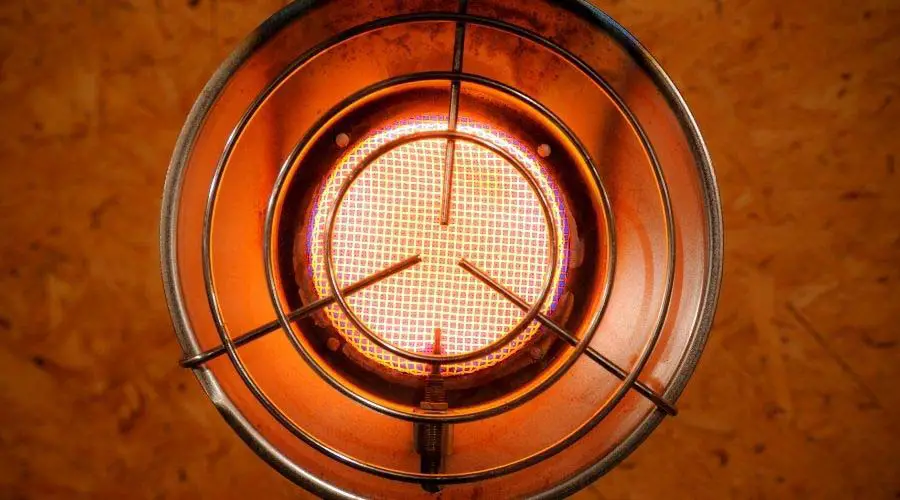
2. Natural Gas Heaters
Natural gas heaters work in much the same way as propane ones, but use the natural gas lines in your home. To use this option, you must have natural gas in your home already.
Natural gas is the cleanest burning fossil fuel and is suitable for heating. Unlike propane, you won’t have to refill containers and save on energy costs.
These usually require professional installation. So, initial costs can be a bit higher, and you won’t have the portable flexibility of the propane ones.
Natural gas heaters are generally mounted to a wall or the floor and are safer to use than propane heaters.
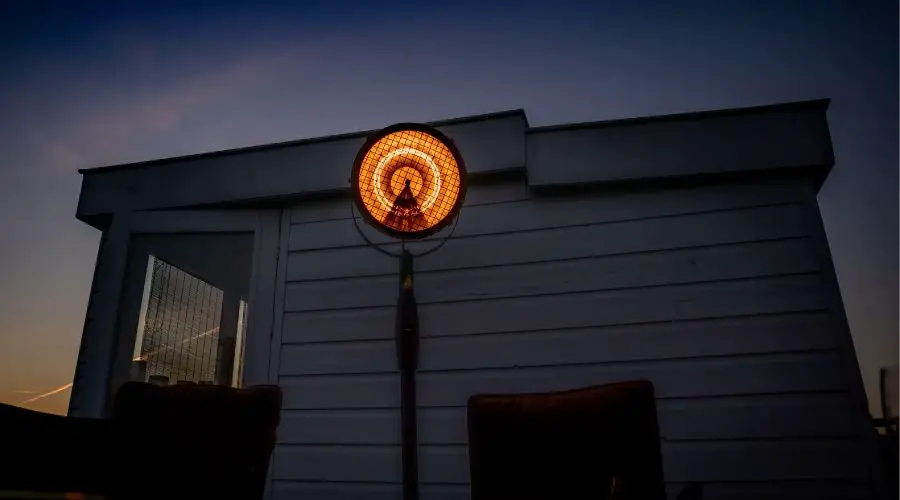
3. Electric Heaters
Electric heaters also use infrared to heat your body rather than the air between you and the heater. They are very efficient and don’t require the burning of any fuels.
Because there is no fuel burned, they do not require ventilation as other heaters do, making them ideal for enclosed patio spaces.
Electric heaters are also the most portable and easiest to hook up, just plugin. They are also the safest use around lawn furniture, cushions, and kids.
As much as a plugin is convenient, it can also be a problem. It would be best to have adequate outlet availability or run extension cords to operate them. They also can have high energy usage and take longer to heat the space than gas or propane.

4. Wood Burning Heaters
Wood-burning heaters can be the most attractive styles, including fire pits and chimineas. Plus, if you live in rural areas or have a source of wood, then these can be free to operate.
However, wood-burning does produce a lot of smoke, which can be inconvenient for house parties and gatherings. It also means you don’t want to use them in a covered area unless you have a chimney or hood that vents outside.
Also, some cities have air quality measures in place that prevent you from using wood-burning stoves or heaters on certain days or times of the year.
Each of the heaters above will consider when operating in a covered patio or under a canopy. So, when purchasing your heater, make sure you understand what you want out of it. Also, plan for the space and fuel or energy sources that are easiest for you.
What Considerations are Important When Using a Heater in a Covered Patio?
In addition to the type of heater and the fuel source, you will also want to consider other factors regarding your outdoor space. The ideal kind of heater and the precautions necessary will differ depending on the setup.
1. Canopy or Roof Material
The flammability of various materials will differ and help you decide how far away from them you need to keep your heater.
For example, let’s look at a metal roof versus a vinyl canopy. If your heater calls for a minimum of three feet of clearance from the ceiling, then with a metal roof, you can confidently mount it at exactly three feet distance. But, if it is the vinyl canopy, you might want to go a bit further to be safe.
Added distance is needed because the vinyl can quickly get too hot when used for long periods or moving in the wind.
Too much heat exposure can lead to it melting or even catching fire. So, you would probably want to give a bit more than a three-foot distance to be safe.
So, assess the type of roof you have/ If it is flammable, err on the side of caution and give a bit more room than the heater instructions call for. If it’s a non-flammable material, be confident following the minimum recommendations.
2. Ventilation
As we hinted at before, ventilation is an essential factor in the type of heater you use and how you set it up. The airflow will vary considerably based on your patio setup, so understand your unique situation.
Ventilation should not be an issue if you use an umbrella or canopy with no walls. Any of the heater types will work safely.
But, if it is a wholly or partially enclosed patio, you may be limited to only using the electric heaters. Never burn any fuels in an enclosed area, even clean-burning ones like natural gas and propane.
How Much Clearance Do You Need Above a Patio Heater?
Now that we understand the different types of heaters and consider our space, we can discuss clearance.
The amount of clearance you will need will vary greatly by the product type and manufacturer. So, you will need to check your heater’s specifications before installation or use.
However, if you are still planning your purchase and want to see what will fit your space, hers are some values for some standard products.
| Heater Type | Minimum Distance from Roof | Minimum Distance from Floor |
|---|---|---|
| Tungsten Smart-Heater (propane or natural gas) Wall-mounted, no heat deflector | 36 Inches | 8 feet |
| Tungsten Smart-Heater (propane or natural gas) Wall-mounted, with heat deflector | 14 inches | 8 feet |
| Mushroom-style propane heater | 24 inches | N/A (free standing) |
| Glass tube propane heater | 24 inches | N/A |
| Electric outdoor patio heater | 18 inches | 6 feet |
| Freestanding natural gas heater | 24 Inches | N/A |
| Wood burning Chiminea | 36 Inches | N/A |
As you can see, the distances between the heating unit and the roof vary. You will generally want clearance that exceeds 14-18 inches for electric heaters or those with heat deflectors and about 24 inches for most others.
Is it Safe to Use a Patio Heater on a Covered Porch?
It is safe to use a patio heater on a covered porch as long as you follow the manufacturer’s instructions and take precautions. The electric heaters are safest, as there is no flame or fuel source.
Ensure that you have proper clearance if you want to use propane, natural gas, or wood-burning heaters on your porch. Also, increase support if your ceiling is made of very flammable material or moves in the wind.
Also important is to clear away all flammable materials, especially fuels like gasoline or starter fluid for charcoal BBQs.
Maintain at least 3 feet between any heaters and patio furniture or soft patio walls (screens, tarps, etc.)
Never use any fuel-burning heaters in an enclosed or poorly ventilated space, as they release odor-less carbon monoxide and other toxic gases. Ensure that your patio has adequate airflow to operate your outdoor heater.
What is the Best Outdoor Heater for a Covered Porch?
The heater that best suits your covered patio will depend mainly on your preferences. Some of the heaters, like the glass tube heaters, are made to be very aesthetically pleasing and add to the look of your patio.
- Others, like wall-mounted units, save floor space on small patios and are primarily out of the line of sight. They are also safer for children and pets, as nobody can touch them or knock them over.
- Electric units are accessible for anybody to install, as you need an outlet to plug in to. They are generally not as visually attractive but have no smoke or odors.
- Wood pits and chimineas are wonderful congregations and focal points for any party. They also hold a lot of emotional value to those who grew up camping and outdoors.
There are many factors to consider, so we have made this short list of pros and cons for each heating unit.
| Heater Type | Pros | Cons |
|---|---|---|
| 1. Propane heaters | – Easy setup – Portable – Fast heating – High heat output | – More expensive than natural gas – Requires trips to fill the canister – Susceptible to wind – Propane leaks are dangerous/hard to detect |
| 2. Natural gas heaters | – Cheaper than propane – High heat output – Fast heating – Dependable – Cleaner and safer than propane | – Not portable – Needs professional installation – Susceptible to wind – Gas leaks are dangerous/hard to detect |
| 3. Electric heaters | – Simple hook-up – No flames – No gas/fuel – Doesn’t require ventilation – Portable | – Slow to warm up – Not practical for large areas – Often loud or unattractive – Costly to use |
| 4. Wood burning heaters | – Attractive – Nostalgic/communal – Cheap to operate – Cheap to build | – Smokey – Limits in some areas – Difficult to light – More maintenance required |
Hopefully, that can help you decide and choose the best outdoor heater for your needs. Remember to consider the size of your space, the heating requirements for your area, and the time of year to select the best option.
What Other Precautions Should I Take When Using an Outdoor Heater?
Most of the considerations for an outdoor heater involve design, fuel type, clearance to the ceiling, and ventilation. But, there are also other precautions you need to take to ensure safe use.
In the United States, space heaters cause 43% of all house fires. Furthermore, they are responsible for 80% of equipment-related fire injuries. So use them responsibly.
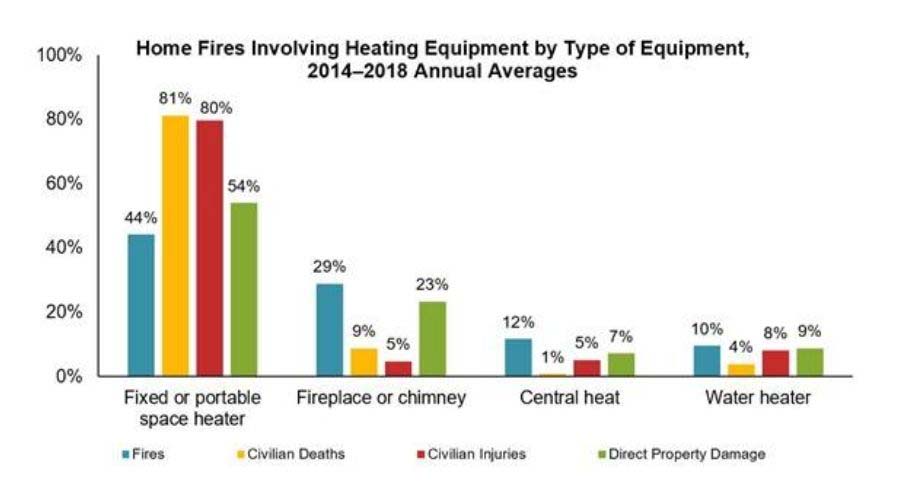
Like infrared units, all heaters will be hot to the touch, even without an apparent flame. So, ensure that they have enough clearance not only to your patio cover but on all sides.
Ensure that party decorations do not come within 6 feet of any heater. Also, do not use any flammable party toys like silly string anywhere in the vicinity of the heater.
If tipped over, most heaters today have safety shut-offs, so check and make sure yours has this feature. If not, then consider stabilizing it when using it in large groups or around children.
Gas leaks are hazardous, as they are challenging to detect outdoors. Natural gas is lighter than air and so will dissipate upwards. It also has a rotten-egg-like smell. If you notice leaking natural gas, get out immediately and call the fire department.
Propane is heavier than air and can pool up in enclosed space when leaking, causing explosions. So, ensure there are no leaks and shut off the valve at the tank when not in use.
To test for leaks, you can use a leak detector fluid. This fluid bubbles like soap when exposed to a leak. You should periodically test all connections and hoses with leak detector fluid when setting up, performing yearly maintenance, or after prolonged periods of storage.
Conclusion
As this is only a general guide, it will not include all the safety info for your specific heater. Even if you have owned similar heaters in the past, be sure to read all instructions and warnings thoroughly,
If you follow all these precautions and ensure proper clearance levels, outdoor patio heaters can be very safe.
While they used to be seen mainly in restaurants and commercial applications, outdoor heaters are becoming more readily available and cheaper for use at home. Heaters mean you can extend your summer parties into the fall or even the winter.
We hope that this article has been helpful for you and that you now understand how to use your outdoor heater in a covered patio or deck.
Sources

